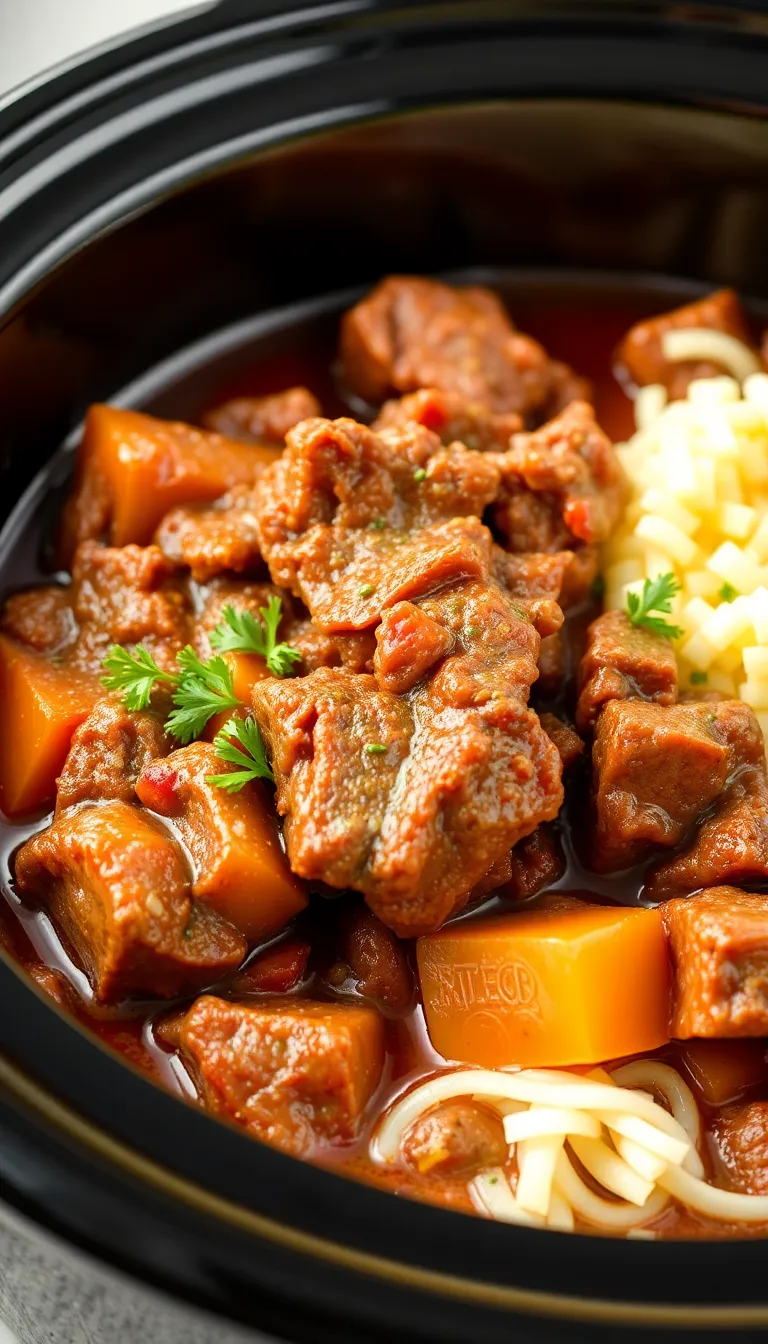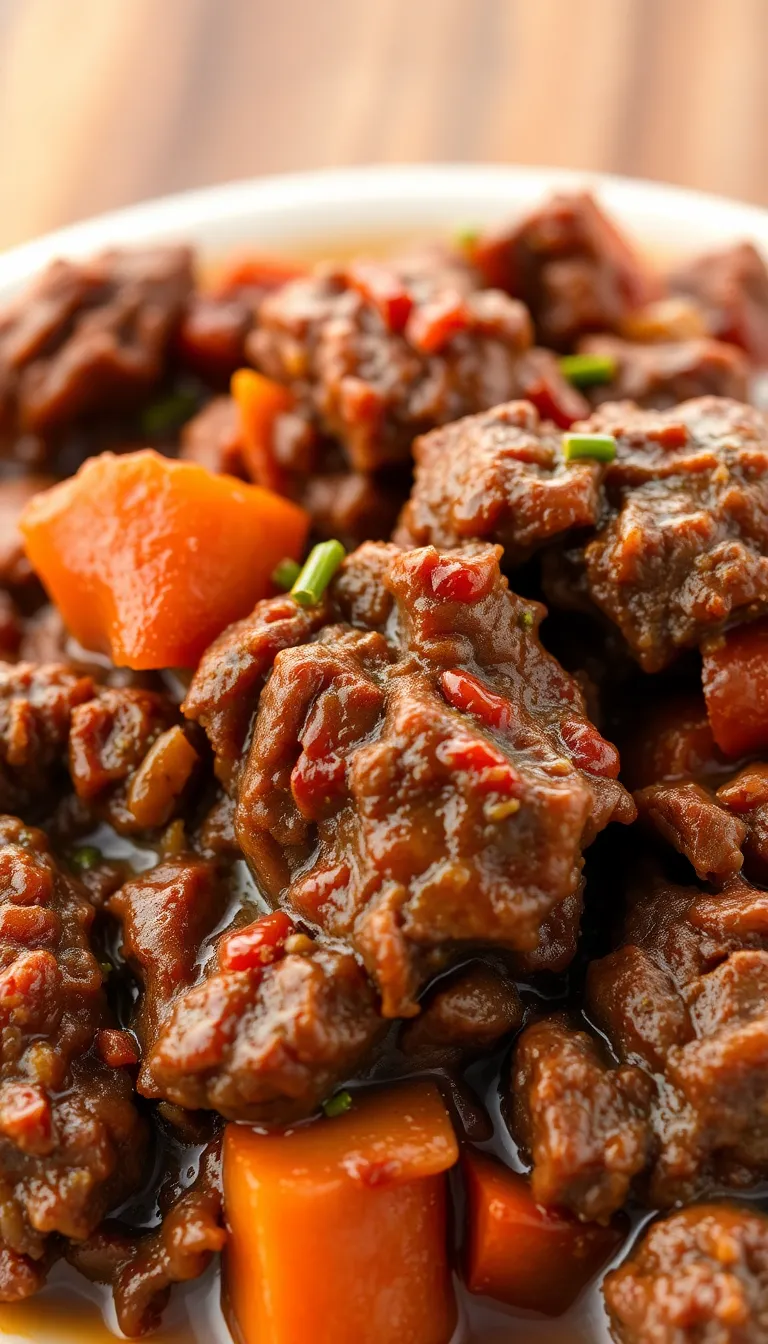Imagine this: tender, fall-apart beef simmered in rich, savory gravy with carrots, potatoes, and herbs—all while you do absolutely nothing. No babysitting the stove, no fancy techniques, just a crock pot doing the heavy lifting. This isn’t just stew; it’s a cheat code for dinner.
And the best part? Your kitchen will smell like a five-star restaurant. Who needs takeout when your slow cooker turns basic ingredients into magic?
Let’s get to it.
Why This Recipe Slaps
This isn’t your grandma’s dry, overcooked stew. The slow cooker guarantees perfectly tender beef every time, while the low-and-slow cooking melds flavors like a culinary symphony. It’s hearty, forgiving (forgot to defrost the meat? toss it in frozen), and makes enough for leftovers—because cooking once and eating twice is the ultimate life hack.
Ingredients You’ll Need
- 2 lbs stew meat (beef chuck works best)
- 1 onion, diced
- 3 carrots, chopped
- 3 potatoes, cubed
- 3 cloves garlic, minced
- 4 cups beef broth (low-sodium if you’re watching salt)
- 2 tbsp tomato paste
- 1 tsp thyme, 1 tsp rosemary, 1 bay leaf
- Salt and pepper to taste
- 2 tbsp flour (for thickening, optional)
Step-by-Step Instructions
- Brown the beef (optional but worth it).
Sear the stew meat in a pan for 2–3 minutes per side for extra flavor. Laziness is allowed—skip this if you’re in a hurry.
- Dump everything in the crock pot. Add the beef, onions, carrots, potatoes, garlic, broth, tomato paste, and spices.
Stir like you mean it.
- Cook low and slow. Set your slow cooker to low for 8 hours or high for 4–5. Patience is a virtue, but hunger is real.
- Thicken the stew (optional).
Mix flour with a bit of broth, stir it in, and cook another 15 minutes if you want a thicker gravy.
- Fish out the bay leaf. Unless you enjoy surprise mouth swords.
How to Store This Masterpiece
Let the stew cool, then stash it in an airtight container. Fridge: Good for 3–4 days. Freezer: Lasts 3 months (thaw overnight in the fridge). Reheat on the stove or microwave—just stir it well to revive the magic.
Why This Recipe Wins at Life
It’s budget-friendly, feeds a crowd, and requires zero skill.
Plus, it’s packed with protein and veggies, so you can pretend you’re a health guru. The slow cooker does 95% of the work, freeing you up to binge your favorite show guilt-free.
Common Mistakes to Avoid
- Overcrowding the pan when browning the beef. Do it in batches, or you’ll steam the meat instead of searing it.
- Skimping on cook time.
Tough beef? You didn’t cook it long enough. The slow cooker giveth tenderness, but only if you let it.
- Adding dairy too early.
Want creaminess? Stir in a splash of heavy cream after cooking, unless you enjoy curdled soup.
Swaps and Substitutions
No potatoes? Use sweet potatoes or turnips.
Out of beef broth? Chicken or veggie broth works in a pinch. Vegetarian?
Swap beef for mushrooms and lentils (but, IMO, it’s not the same). Wine lovers? Add a half-cup of red wine for extra depth.
FAQs
Can I use frozen beef?
Yes, but add 1–2 hours to the cook time.
The slow cooker doesn’t judge your lack of meal prep.
Why is my stew watery?
You probably didn’t reduce the broth or add a thickener. Fix it by simmering uncovered or mixing in a flour slurry.
Can I skip the tomato paste?
Sure, but you’ll miss the rich, umami kick it adds. Substitute with ketchup in a pinch (we won’t tell).
Final Thoughts
This stew is the culinary equivalent of a cozy blanket—comforting, reliable, and impossible to mess up.
Whether you’re feeding a family or meal prepping like a pro, the crock pot does all the work while you take credit. Now go forth and let your slow cooker earn its spot on the counter.






